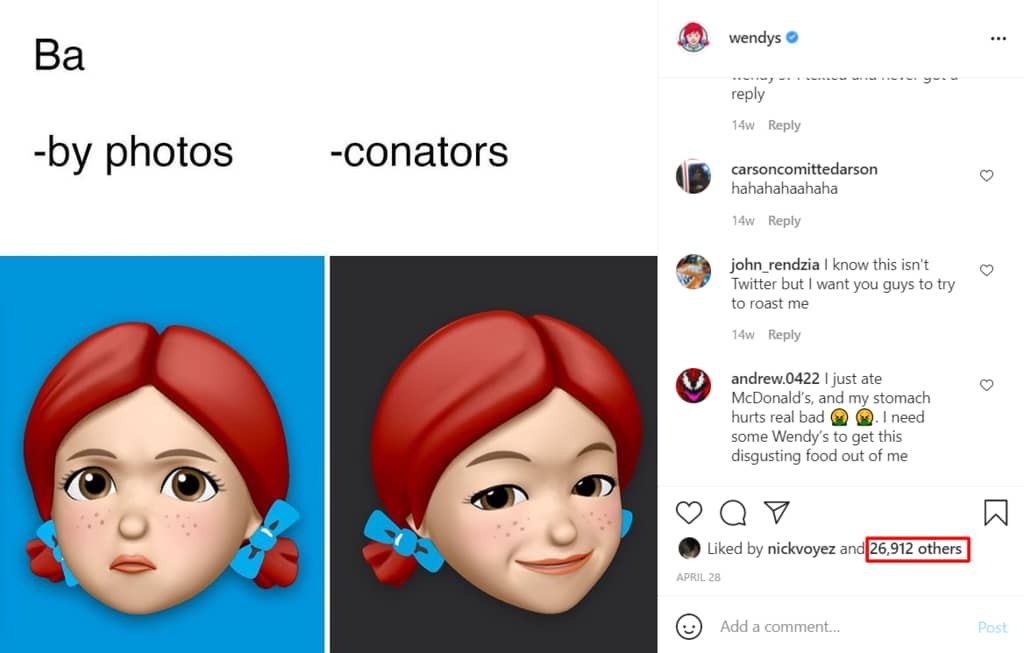Creating a social media marketing strategy is a cakewalk, right?
Fire off a Facebook business page with a snazzy-looking banner, follow a few influencers on Twitter, dish out a couple of Instagram stories and you’re done!
If only it were that easy…
Here’s the skinny:
Creating an effective social media marketing strategy is a concentrated effort with a lot of moving parts.
Every company (and industry) approaches social media a little different, but overall, they follow a similar set of core rules that helps them:
- Build brand awareness
- Engage their audience
- Generate more organic traffic
- Drive more sales
And today, we’re going to put these core rules under the microscope and deliver them to you as easy-to-follow, actionable tips you can use right off the bat.
So buckle up, gang because we’re about to embrace social media marketing at top speed!
What is a Social Media Marketing Strategy?
A social media marketing strategy uses social media platforms — like Facebook, Twitter and Instagram — to promote your business’ products and services.
Different types of social media require different forms of content.
Because even though your target audience is similar across all social media, the type of content you create and how you engage your audience is unique to each platform.
Now that we’ve defined social media marketing, let’s sink our teeth into 10 super-detailed social media marketing tips that’ll help turbo-charge your following and drive your business forward.
1. Don’t be a Dummy: Set S.M.A.R.T. Goals
The first step in any marketing strategy is setting S.M.A.R.T. goals.
Now, your marketing goals should be driven by a single question:
What objectives do I want to achieve with social media?
If you approach your social media strategy with a willy-nilly attitude where anything goes, you won’t get very far.
Goals help keep you focused.
And S.M.A.R.T. goals keep your strategy aligned with your business objectives.
They should be:
- Specific — Set real numbers with real deadlines.
- Measurable — Make sure your goal is trackable.
- Attainable — Work towards a goal that is challenging, but possible.
- Realistic — Keep it in line with what you and your team are capable of.
- Time-bound — Give yourself a deadline and stick with it!
When setting your social media goals, there are a couple of things you should keep in mind:
Remember to be Realistic
You probably have big dreams for your social media marketing, right?
Think of how sweet it would be to gain a million followers lickety-split or have each of your posts generate tens of thousands of shares or likes.
Is it possible? Yes.
Is it going to happen overnight? In most cases, no.
Many social media novices believe they’re an exception to the rule and think with just a teensy bit of effort, they’ll blow up in record time.
And even though it’s great to have big dreams and goals that keep you reaching for the stars, unrealistic marketing goals won’t help get you there.
Stay grounded in reality and set attainable goals.
Remember, one of the cornerstones of successful social media marketing is making continual progress, even if it’s slow and steady.
Meaningful Metrics are the Secret to Progress
Sensible goals combined with meaningful metrics might seem a lot less flashy than gaining a million followers as fast as possible, but they’re equally as ambitious.
Yet, social media marketing newbies often get caught up in vanity metrics like the number of followers or likes.
Instead, focus on metrics like engagement, conversions and click-through rates.
If you’re setting S.M.A.R.T goals, you’ll be tracking meaningful metrics.
For example, your goals (and metrics) should look something like this:
- Increase average Instagram engagement by 35% in 12 months
- Increase conversions from paid social media advertising by 10% year to year
- Implement a customer support channel on Facebook by the end of Q1
- Increase organic social media reach by 6% in 30 days
2. Find Your Tribe
Marketing to everyone is a fool’s errand and a huge rookie mistake.
Like every other content marketing channel, your social media is geared toward a specific audience.
And one of the first (and most critical) actions you’ll take when finding your target audience is creating a buyer persona.
Creating a Buyer Persona

A buyer persona or your ideal customer is an imaginary person who embodies your target audience’s specific traits.
In other words, your buyer persona is the person or personality you’re trying to attract with your marketing pizazz.
A buyer persona will help guide:
- The type of social media content you create
- Where you share your content
- The problems and pain points your content addresses
Now, it’s possible to have more than one buyer persona — most businesses have multiple market segments.
But, if you’re new to the social media marketing game, it’s best to stick with a single profile.
Use Real Data When Crafting Your Buyer Personas
Some marketers go with their gut and hit the jackpot.
And others create an unquenchable dumpster fire of marketing mishaps.
When searching for your target audience and creating your buyer personas, don’t make wild guesses.
Instead, use real data from social media analytics to figure out details about your audience like:
- Demographic information (age, income, occupation, location, etc.)
- Their motivations and desires
- Their problems
- The language they use
- The type of content they engage with the most
- Similar businesses they follow
The bottom line: Take the time to define your audience. The better you know who you’re marketing to, the better your marketing will be. Period.
3. Don’t Forget to Budget!

Social media strategy takes time and resources, so you’ll need to establish a realistic budget based on your marketing goals.
And the more ambitious your goals, the bigger the budget you should set aside.
Be mindful of your return on investment (ROI).
If you’re spending more on your social media marketing plan than you’re bringing in, you might need to revamp your budget or redefine your goals.
So, how much should you set aside for your social media marketing budget?
According to WebStrategies:
- Most companies allocate between 5% – 15% of their total revenue to marketing
- 35% – 45% of the total marketing budget is spent on digital marketing
- And 15% – 25% of the digital marketing budget is spent on social media
4. Picking the Perfect Platform
Picking the perfect social platform is something a lot of businesses struggle with.
They think any ol’ social media channel will do and that being everywhere all at once will yield the best results.
Here’s why that’s dangerous thinking:
There is a “Wrong” Platform
Some marketers will tell you that there’s no wrong choice when selecting a social media platform for your business.
This is only half true.
Establishing any social media presence is a step in the right direction.
But, depending on your target audience, certain platforms might be more effective than others.
You see, selecting the perfect social channel comes down to where your target audience spends their time online.
For example:
If you’re in the B2B space, a platform like LinkedIn will deliver better engagement and drive more sales than Pinterest marketing.
Alternatively, if your target audience is mainly made up of Gen-Z, then TikTok will likely be the big gun in your social media arsenal.
Don’t Go Nuclear When Choosing Social Media Platforms
You might think it’s a good idea to go nuclear and establish a presence on every platform all at once.
But, every social media network has its own nuances and tackling all platforms divides your attention.
And instead of learning how to effectively market on 1 or 2 platforms, you’ll probably struggle with handling basic tasks on every platform.
That said, after you learn the tricks of the trade on a single platform, expand onto others.
You see, where your audience spends their time online right now might not be where they spend it forever.
So it’s always a good idea to branch out and prepare for the future after you’ve mastered marketing on a particular platform.
5. Investigate the Competition Like Sherlock Holmes
With social media marketing, some of your greatest insights will come from spying on your competitors.
Before crafting your marketing strategy, look at the competition and find out their secrets:
- What’s their most successful content and social media campaigns
- What makes their audience tick
- Where are they falling behind
- How can you adapt and beef-up their marketing strategies for yourself
This is all part of an investigative process called competitive analysis.
The Sleuthy Art of Competitive Analysis
Competitive (or competitor) analysis is just a fancy term that means investigating the competition and understanding their strategy and why they’re doing the things they’re doing.
When performing competitor analysis, look for things like:
- How frequently they’re posting
- Who they’re targeting
- The type of content their posting
- If they’re using Instagram or Facebook ads
- If they’re using influencer marketing
- What keyphrases they’re targeting
- What hashtags they’re using
- How their audience interacts with their content (analyze comments, likes, shares and reactions)
Capitalizing Where the Competition Falls Short
Don’t copy your competitors’ strategy and content completely.
Instead, look for gaps and capitalize on opportunities.
For example, your main competitor might be active on Instagram while ignoring Pinterest marketing entirely.
And if enough of your target audience uses Pinterest, you might be able to capitalize on that market and build your authority before your competitor catches up.
6. Create Engaging, Useful and Meaningful Social Media Content
If you’re looking to craft meaningful content, you can’t just dial it in.
You see, half-assed content marketing doesn’t motivate anyone.
And if you want your followers to pass over your posts like a beet salad at a barbecue buffet, then by all means, create thin, sleepy content.
On the other hand, if you want an inspired audience that takes action and shares your posts with the world, then you’ll need engaging and useful content.
But what’s the secret to engaging and useful content?
Content That Educates, Entertains or Solves a Problem
The best content either solves your target audience’s problems or educates them on something that vibes with their interests.
But social media content can also be entertaining.
Look how Wendy’s uses a viral meme format to plug the Baconator.
Humor can be a hit-or-miss marketing effort.
It also depends on your target audience.
But when executed right, it gets eyeballs on your brand.
So, in addition to solving problems and educating your followers, it doesn’t hurt to be cheeky every now and then.
Content That Fits The Context of The Platform
Think about the type of content that works best on the platform you’re using.
You see, an idea may translate easily across social media channels, but the presentation might not.
For example, video content is wild these days, but would a 10 minute YouTube tutorial translate on TikTok?
Nope. Content like that wouldn’t vibe with a TikTok audience.
Or let’s say you’re trying to promote an epic blog post on Instagram — a real juicy, data-driven blog post, one that’s guaranteed to bring in email subscribers.
Now you could throw up a stock image and give some bullet points about the post in the description.
But something like a sharp looking infographic with thought-provoking stats screams “share me” a heck of a lot better than successful_business_meeting_handshaking.jpg ever will.
Content That Provides More Value Than Promotion
Excessive self-promotion on social media is a big no-no.
Now, don’t get me wrong, the entire point of social media is to promote your products and services — that’s how you make money — but social media isn’t a place for hard selling.
Social media is meant to be social.
And if you’re using it solely to peddle your wares instead of creating value for your audience, you’re not giving them a reason to care.
This is the reason you create content:
Connecting with your audience on a personal level and showing them you understand their hopes, dreams, struggles and setbacks.
And THAT is engaging content.
As a rule of thumb, 80% of your content should be informative and 20% should be promotional.
7. Visual Content is King, Queen and the Whole Court Too!
Images and videos are shared up to 40 times more than other types of social media content.
And according to a recent HubSpot study, 54% of consumers wanted to see more video content from brands and businesses they follow.

There’s no denying the need and importance of visual content in your social media plan.
For example:
- Tweets with video receive up to 10 times more engagement than those with text alone.
- Facebook posts with visuals see up to 2.3 times more engagement than those without.
- Over 4 million businesses on Instagram use Stories ads every month
- And 50% of Instagram users surveyed said they’ve visited a website to buy a product or service after seeing it on Stories.
The bottom line: visual content is a big mover when it comes to social media marketing. And if you’re not at least pondering the possibilities of images and video, you’re missing out big time.
8. Don’t Shoot From the Hip: Planning Out Your Content Strategy
Unless you’re a content marketing clairvoyant, you’ll need to plan.
And the simplest way to keep yourself organized and pumping out fresh, never frozen content is by using a content or social media calendar.

Why You Need a Content Calendar (Seriously)
A content calendar lets you plan, schedule, organize and track your content.
We use one here at Live Your Message — really, any company that’s savvy with content uses a calendar.
Now, using a content calendar comes a host of benefits like:
- Keeping a consistent posting schedule
- Staying up to date with trending topics
- Engaging and retaining your audience
- Brainstorming ambitious and creative ideas
And let’s face it, the best part about having a content schedule is that it makes producing high-quality social media content easier.
Instead of staring at a blank screen wondering what to post, you’ve got 3+ months of content locked and loaded — that’s the power of a content calendar.
How to Create a Content Calendar
In the simplest form, creating a content calendar has 4 steps:
Researching potential topics: Investigate current trends, influencers and keywords you think will maximize audience engagement. Don’t be afraid to use social media marketing tools for analyzing keywords and finding solid ideas.
Come up with content ideas: Flesh-out headlines, hashtags, images and the general framework of your content while asking yourself, “how does this particular piece of content satisfy my marketing objectives.”
Figure out the right content mix: Are you curating content from other sources or linking to your own blog post? Will your content support lead generation goals or be purely informational? Use your content calendar to mix up your content and hit your audience with fresh ideas in various formats.
Create the workflow: Schedule and assign the tasks needed to create your content. There are tons of free and paid content calendar tools that help take the grunt work out of creating a workflow.
9. Post Consistently and at The Right Time
Creating your content is half the battle.
But posting consistently and at the optimal time for maximizing reach is another story.
Like we mentioned before, using a social media management tool for analytics and scheduling your posts is a worthwhile investment.
But what about when to post and how often?
The Best Time to Post Content
Every marketer knows that timing is super important, especially in the realm of social media.
Social Sprout found that the optimal time for posting to Facebook, Instagram, LinkedIn and Twitter was in the morning and early afternoon.
And Brian Dean from Backlinko found after analyzing 912 million blog posts, that there’s no best day for posting content.
But, every business is different. And there’s no universal best time to post content.
So, while studies like these give you guidelines, you’ll have to test and experiment to figure the best time to post your content.
How Often Should You Post to Social Media?
A study from Hootsuite investigated the ideal number of times per day (or week) you should post to Instagram, Facebook, Twitter and LinkedIn.
Here’s what they found:
- Instagram: 3 – 7 times per week
- Facebook: 1 – 2 times per day
- Twitter: 1 – 5 Tweets per day
- LinkedIn: 1 – 5 times per day
Again, every business’s social media activity is slightly different, so test and experiment to find your sweet spot.
10. Audit and Optimize Your Social Strategy
Rarely will you nail your social media strategy the first time around.
This is where auditing and optimizing come into play.
You see, marketing is a moving target and there’s always room for improvement.
And even if your strategies look great on paper, they might not gel with your audience.
Alternatively, if you’ve rolled out a banger strategy that’s exceeded your expectations, you’ll want to scrutinize the heck out of it and see if you can repeat this marketing mojo.
Why Audit Your Social Media Strategy?
Social media is a living, breathing creature that’s constantly evolving.
So, regularly auditing your social media marketing strategy lets you take an objective look at your situation and see:
- What’s working and what isn’t
- If new features on social media platforms require you to change your approach
- How you fare against your competition
- Changes in audience behavior
Test, Tweak and Optimize Like Its Your Job
If you’ve established S.M.A.R.T social media goals, evaluating your performance is a lot easier.
Take a gander at your performance metrics and see if you’ve met your goals.
Then, use the information you learn from your analysis to test new approaches and tweak your social media presence.
For example, you might:
- Try new post styles
- Use different keywords and keyphrases
- Incorporating more video marketing
- Post at different times
- Test out new platforms
- Update your social media profiles
Testing like a mad scientist might seem like overkill, but constant testing delivers valuable data.
And the more data you have, the better you can optimize your marketing strategy.
Drive Opportunity with your Social Media Marketing Strategy
There are over 4.48 billion social media users around the world.
In other words, over half the planet uses some form of social media.
And do you know what that means?
Opportunity.
Now, navigating the rough waters of social media strategy can be a bit tricky.
But with these 10 detailed tips at your disposal, you’ll be smooth sailing in no time.
So, go ahead and get started on your social media marketing strategy today and build the business you deserve with the following you’ve always wanted.
Opportunity awaits!
One of the BEST ways to get and keep attention is through a powerful personal brand… and one of the BEST ways to craft one that’s authentic to you… is to get inspiration from others. That’s why I’ve compiled 13 awesome personal brand examples for you!
Love it? Hate it? Let me know...
-
Thank you !
-
Great stuff!
-
Thanks Karl!
-
-
Super great content! Very helpful!!!!!
-
We’re thrilled that you found it so valuable! Thanks for the comment, Barbara!
-





























Leave a Comment